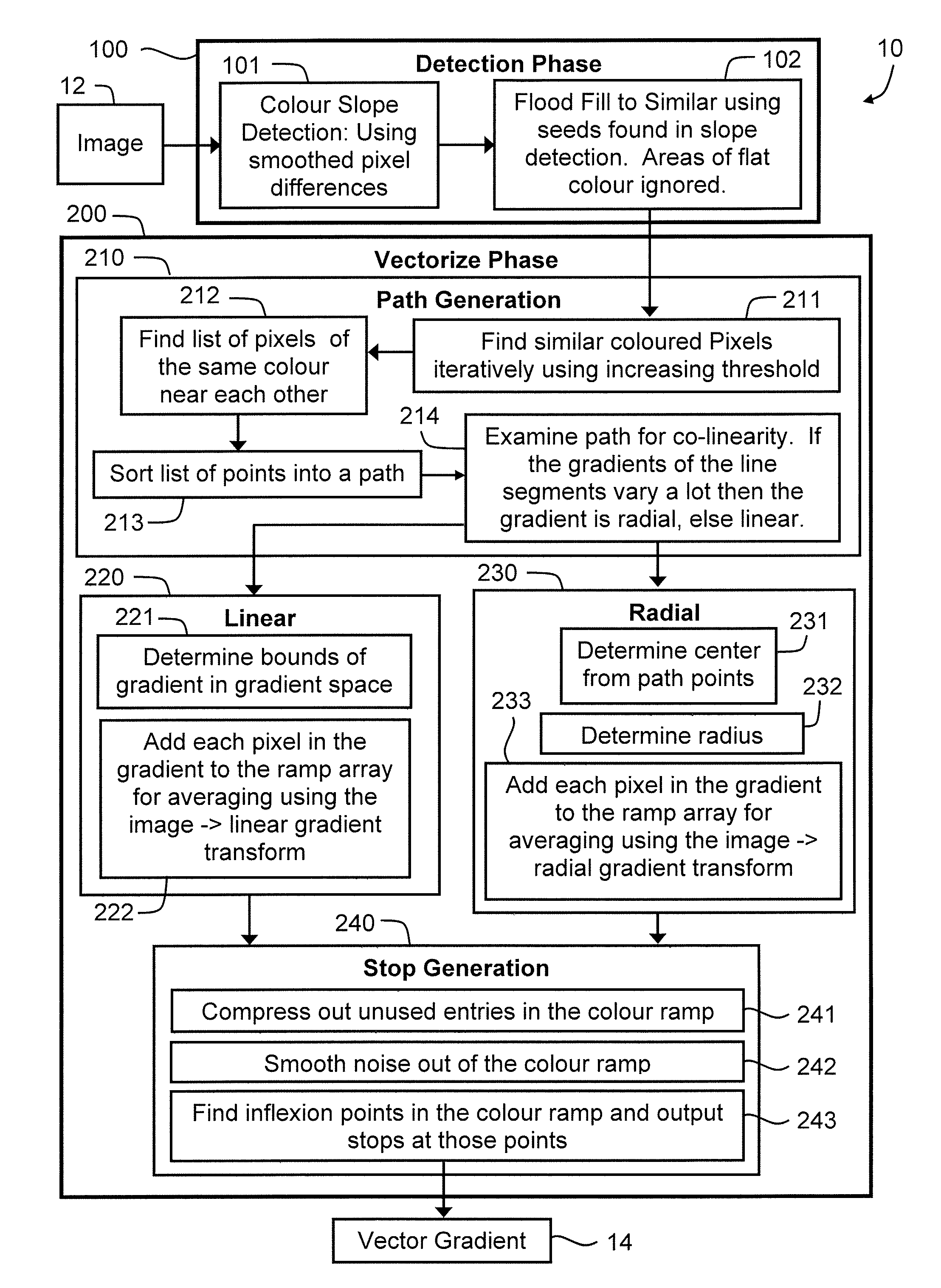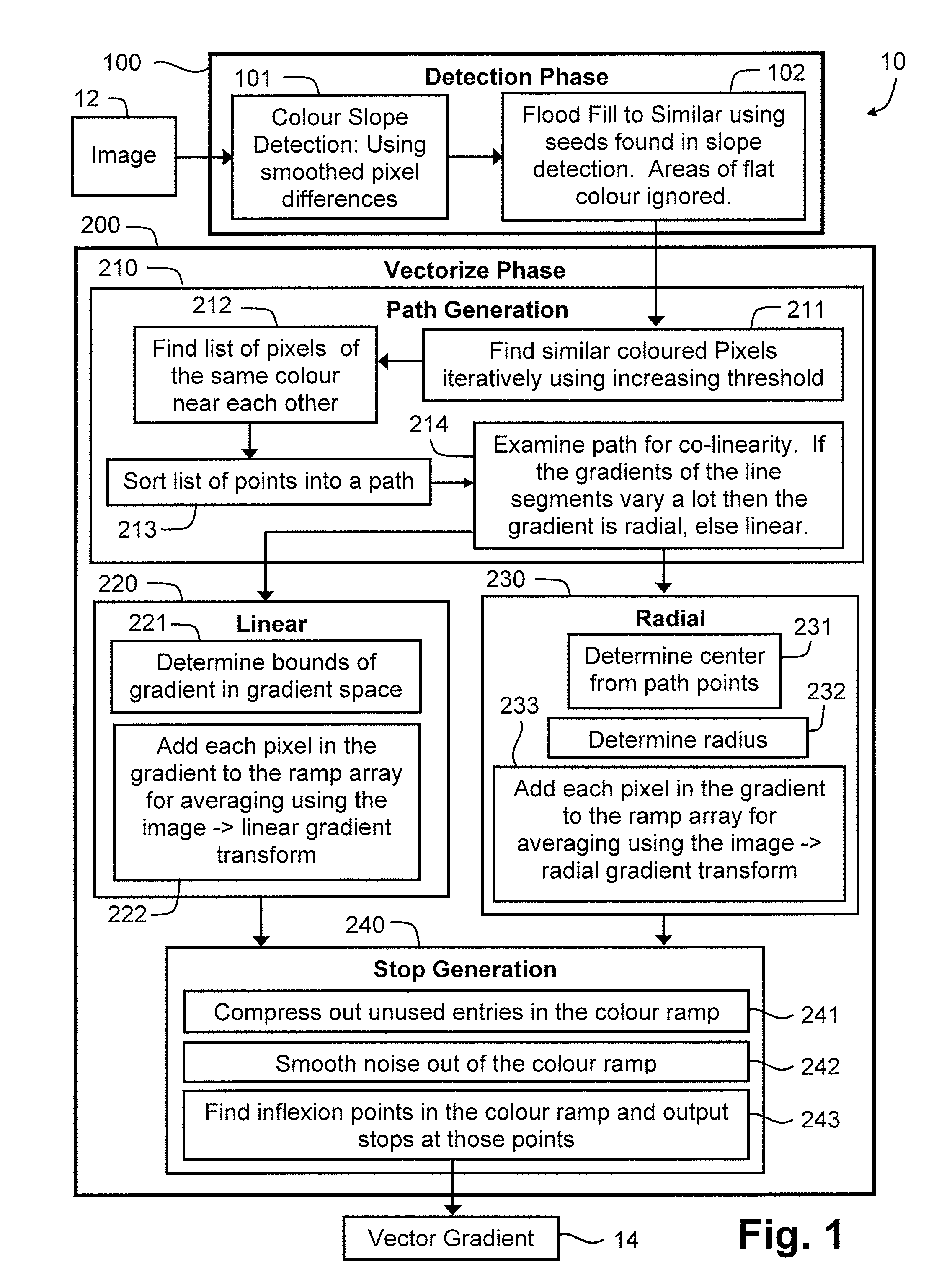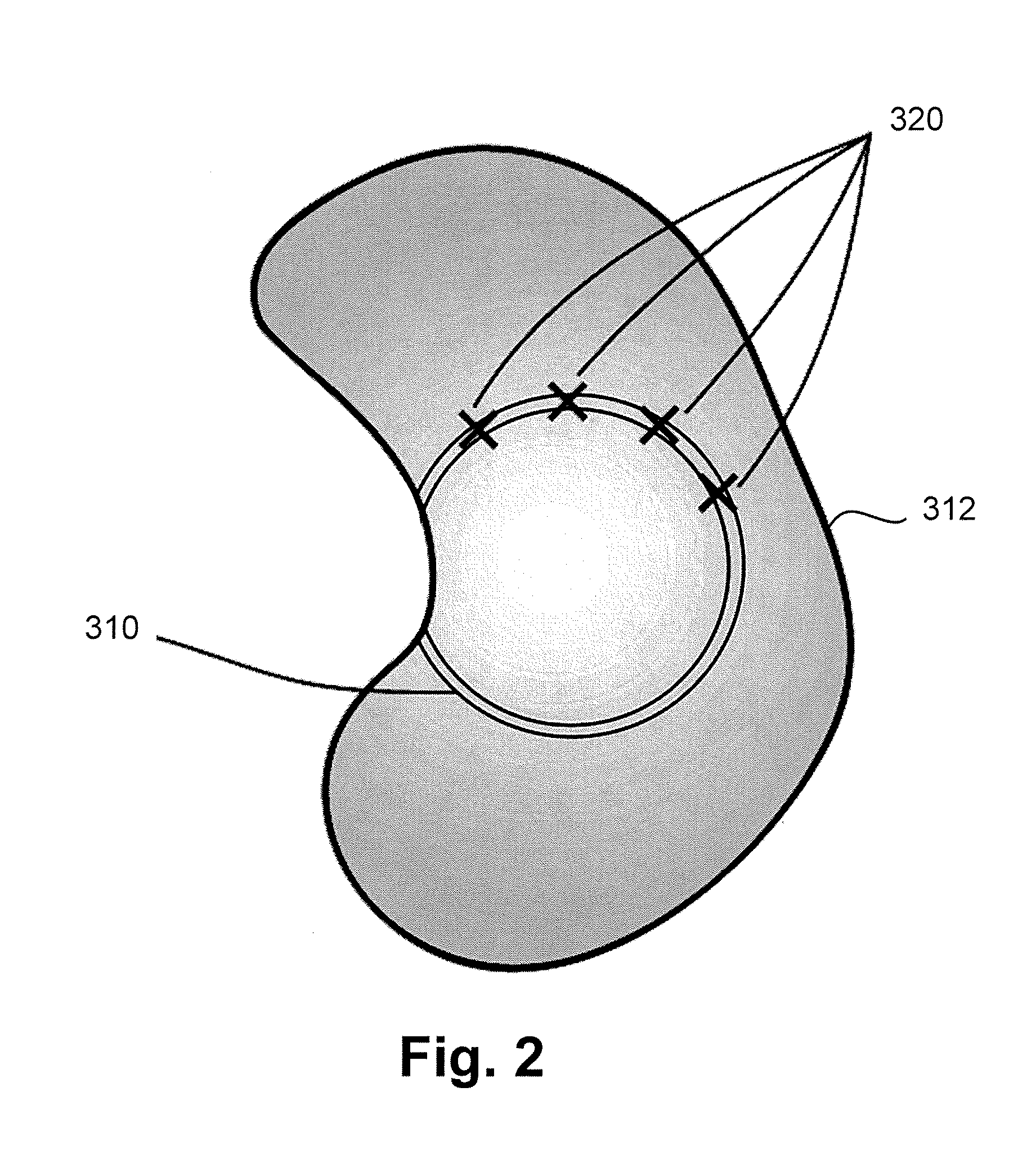Vectorisation of colour gradients
a colour gradient and vectorisation technology, applied in the field of computer graphics, can solve the problems of consuming a non-trivial amount of memory, difficult to edit the resultant colour data using simple controls, and computationally expensive rendering of all the areas of flat colour
- Summary
- Abstract
- Description
- Claims
- Application Information
AI Technical Summary
Benefits of technology
Problems solved by technology
Method used
Image
Examples
Embodiment Construction
ll now be described with reference to the following drawings, in which:
[0036]FIG. 1 is a flow chart of a method of generating a vector description of one or more colour gradients in an image;
[0037]FIG. 2 shows an object used to illustrate the path generation step of the method of FIG. 1;
[0038]FIG. 3 shows an object used to illustrate a prior art method for approximating a raster bitmap fill;
[0039]FIG. 4 shows an object used to illustrate finding the parameters of a linear gradient according to the method of FIG. 1;
[0040]FIG. 5 shows an object used to illustrate finding the parameters of a radial gradient according to the method of FIG. 1;
[0041]FIG. 6 is a schematic block diagram of a system in which the method of FIG. 1 may be applied; and
[0042]FIG. 7 is a schematic block diagram of a general-purpose computer on which the described methods may be practiced.
DETAILED DESCRIPTION INCLUDING BEST MODE
[0043]There are many circumstances in which it may be desired to convert a raster bitmap...
PUM
 Login to View More
Login to View More Abstract
Description
Claims
Application Information
 Login to View More
Login to View More - R&D
- Intellectual Property
- Life Sciences
- Materials
- Tech Scout
- Unparalleled Data Quality
- Higher Quality Content
- 60% Fewer Hallucinations
Browse by: Latest US Patents, China's latest patents, Technical Efficacy Thesaurus, Application Domain, Technology Topic, Popular Technical Reports.
© 2025 PatSnap. All rights reserved.Legal|Privacy policy|Modern Slavery Act Transparency Statement|Sitemap|About US| Contact US: help@patsnap.com



